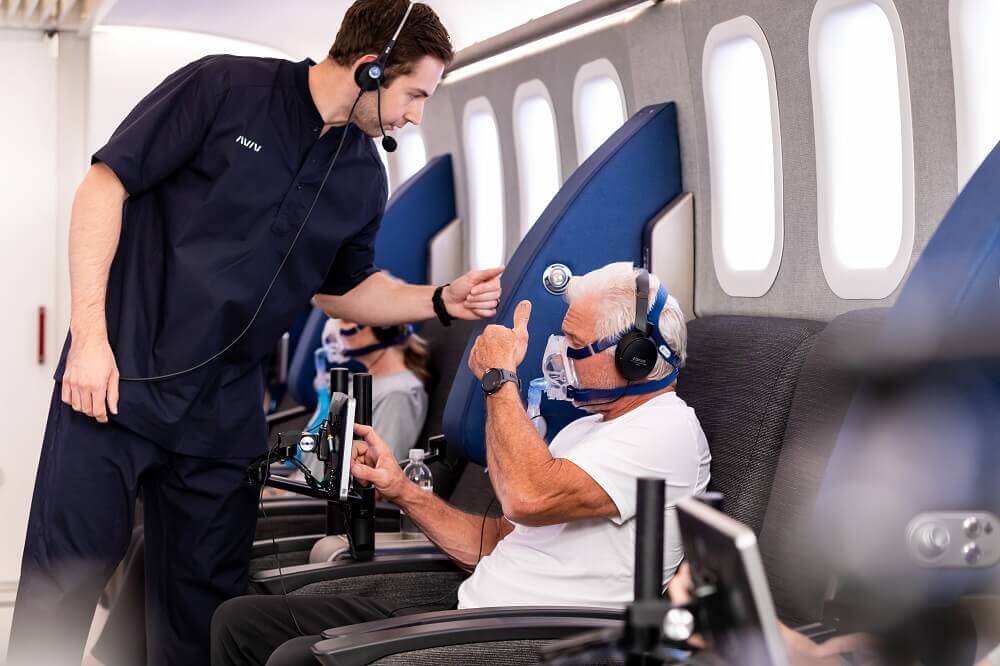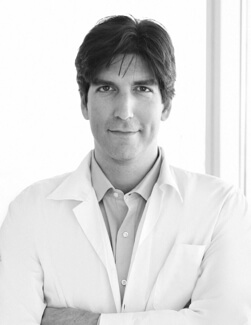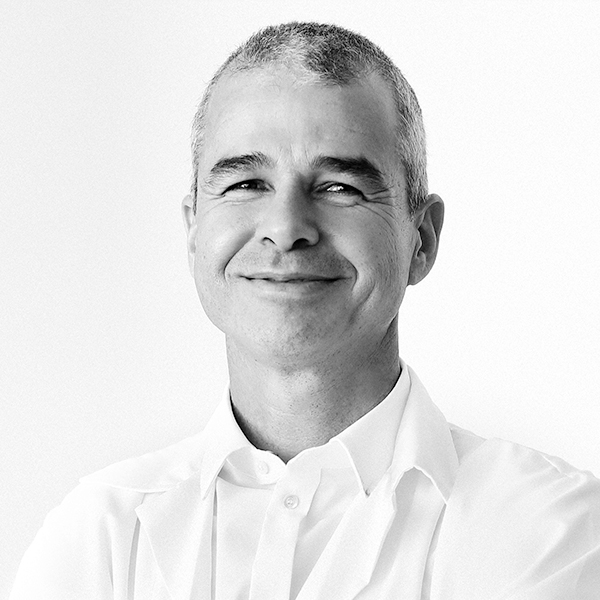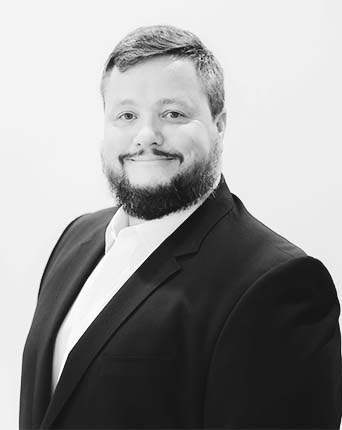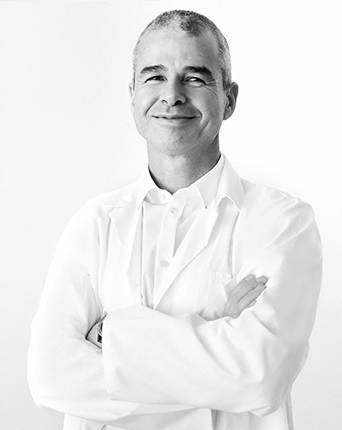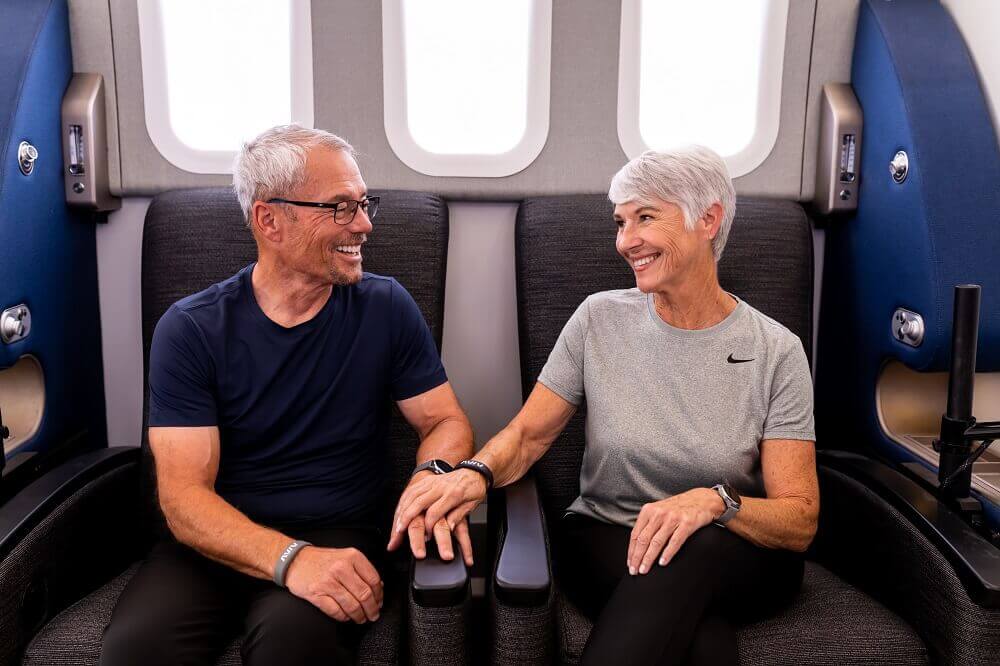
The Stroke Recovery Timeline: Understanding the 5 Stages of Post-Stroke Recovery
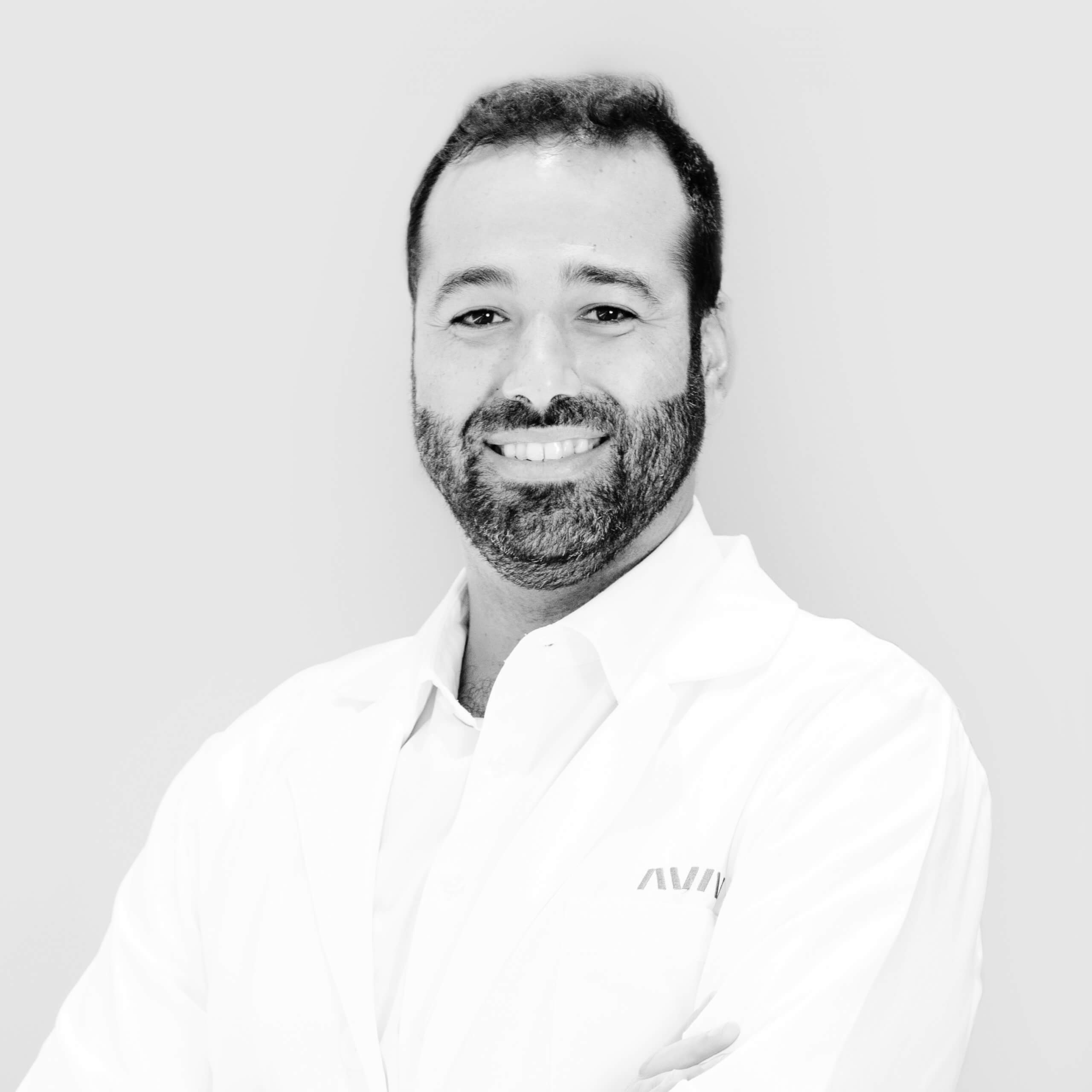

Experiencing a stroke can be life-changing, leaving survivors and their loved ones unsure of what comes next. Understanding the stroke recovery timeline can provide clarity and hope, helping navigate each stage of healing with confidence. The stroke recovery timeline is unique for each individual. The path to recovery after a stroke is influenced by the type and severity of the stroke, age, overall health, and other factors.
Each year, over 795,000 people in the U.S. have a stroke. And up to 60% of stroke survivors suffer motor dysfunction or brain impairment, which may include memory loss and challenges in focusing and processing information. While recovery is possible, many traditional therapies often plateau after six months. At Aviv Clinics, we specialize in helping survivors achieve meaningful improvements in cognitive function, mobility, and overall quality of life, even after traditional therapies have stopped.
Below you’ll find information on the impact a stroke has on your body and the five stages of stroke recovery. Knowing the stages of recovery and the options available can provide renewed hope and direction for continued progress.
What Happens to the Brain During a Stroke?
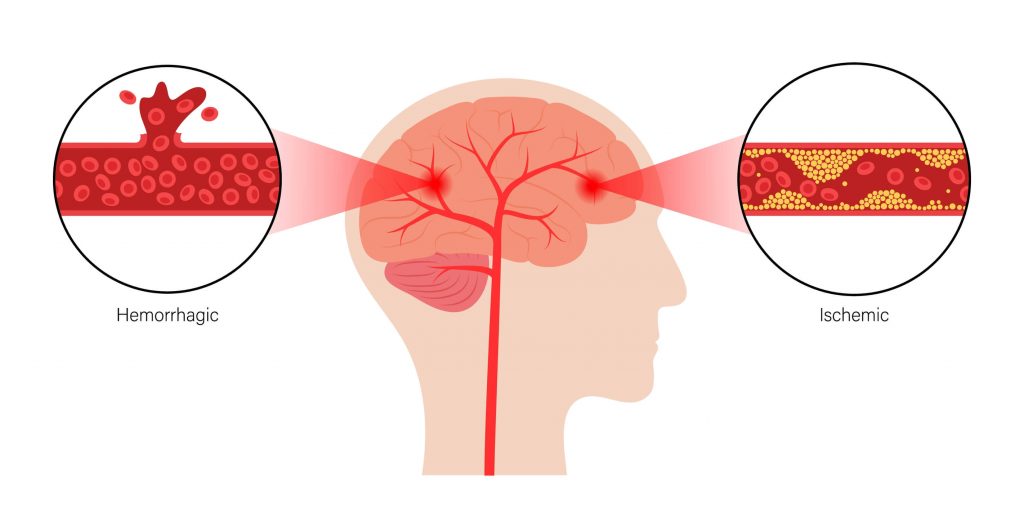
When a stroke occurs, blood flow is disrupted in parts of the brain, meaning oxygen and nutrients cannot adequately nourish brain cells. This can happen in two ways:
- Arteries become blocked (an ischemic stroke)
- Arteries break or rupture (a hemorrhagic stroke)
In either case, a stroke damages areas of the brain. These impacts can manifest in cognitive, physical, and even emotional symptoms.
The Brain After a Stroke – The 5 Support Stages of Stroke Recovery
Studies illustrate that the brain can reorganize and adapt in response to injury. But this process isn’t as clear-cut as you’d hope.
The reality is that each stroke survivor carries unique symptoms and medical histories. The timeline for stroke recovery is inherently diverse. So finding a clinic that can offer a customized post-stroke recovery plan is key. The right treatment plan will likely include a combination of these post-stroke rehab therapies.
The good news: The Aviv Medical Program provides a post-stroke recovery treatment program that is personalized to each patient. A treatment plan can combine cognitive exercises, physical training, dietary coaching, and sessions of hyperbaric oxygen therapy to produce improvements even years after a stroke. It is never too late to enhance your recovery.
The Stroke Recovery Timeline: A Stage-by-Stage Guide
While there is no fixed, standard timeline, the stages for improvement generally follow a sequence. You or your loved one will progress through the stroke recovery timeline at an individual rate. Each step along the stroke recovery stages timeline represents progress.
Here is an overview of the stages of stroke recovery.
1. Acute Stroke Stage (0-72 Hours)
Immediately after a stroke, the patient receives urgent medical care focused on identifying the cause, stabilizing the patient, and preventing further damage. Medications like anticoagulants and antiplatelet agents or medical procedures may be needed. If the stroke is severe, the patient may require emergency intervention.
At this stage, a care team may begin discussing the rehabilitation plan. This team may include physicians, neurologists, physical therapists, speech-language pathologists, and occupational therapists.
2. Subacute Stroke Stage (The First 3 Months)
After the patient is discharged from the hospital, their stroke recovery plan at home or a rehabilitation center begins. During this stage, care is focused on regaining function and preventing complications.
Stroke survivors often see the most improvement during this phase. They may receive physical, occupational, speech, and cognitive rehabilitation therapy and training. Depending on their needs, these post-stroke therapies may occur in outpatient centers or through home-based care. It’s typical for a stroke survivor to engage in multiple therapy programs one at a time or simultaneously as their support needs require.
The “risks of recurrent stroke are highest early after the first stroke.” Because of this, this stage also includes risk mitigation and regular monitoring for signs of a second stroke.
3. Early Stroke Recovery Stage (3-6 Months)
Rehabilitation efforts continue. During this period, patients can still make significant progress with noticeable improvements. Some patients complete one or more programs, or may focus on home-based therapies rather than outpatient programs. Often, traditional insurance plans reduce or stop coverage altogether after 90-100 days of post-stroke rehabilitation, so many patients cease therapy at this time.
However, keeping up with a rehabilitation program is key in this stroke recovery stage and beyond due to the increased risk of another stroke. Ongoing care and support can help with the restoration of cognitive, emotional, physical, and behavioral functioning. Rehabilitation programs may be adapted as the patient relearns skills and their rehab needs change.
4. Intermediate Stroke Recovery Stage (6 Months to 1 Year)
Depending on the patient’s needs and challenges, some stroke survivors may complete therapy programs and experience a return to independence in one or more areas. Others will continue with rehabilitation programs on their road to recovery. In either case, stroke recovery is an ongoing process.
During this stage, progress may slow down, which can be frustrating for the survivor and their loved ones. However, improvement is still possible after these plateaus, particularly if rehabilitation efforts continue. Setting new goals and adding variety to a therapy program may help overcome these plateaus.
5. Ongoing Stroke Recovery Stage (1 Year and Beyond)
Post-stroke recovery can continue for years. It’s difficult to predict the success of therapies and how soon a patient can see improvements. Variables like the severity of the stroke, the location of the brain impacted, and the acute treatments administered all play a role. Recovery takes time, and ongoing care is crucial for any stroke survivor.
However, major gains in function and independence can occur even years after a stroke. With ongoing therapy and lifestyle support, some individuals see improvements well beyond the one-year mark, especially with proper stroke-supportive therapies.
Ultimately, the rate of recovery depends on the severity of the stroke, the individual’s health, and the effectiveness of rehabilitation programs. Improvement may take longer for some patients, but remember: every positive milestone is one more step along the journey.
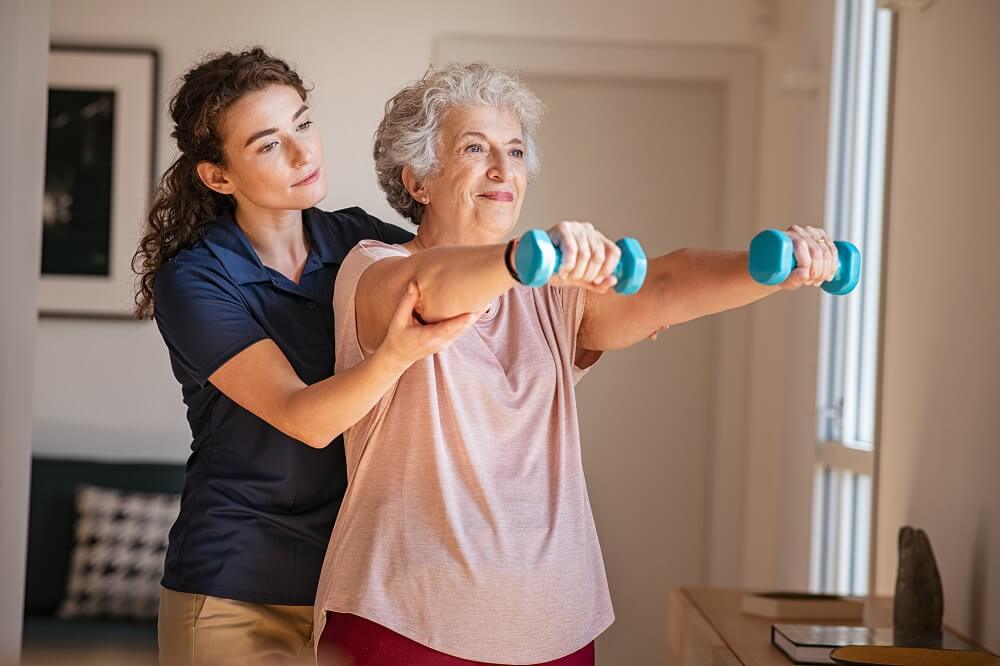
Understanding the Stages of Stroke Recovery Treatment
1. Post-Stroke Thinking, Memory, and Perception Training
Thinking, memory, and perception are vital in day-to-day communication and activities. These qualities make each of us creative and unique. So when half of stroke survivors experience cognitive impairments, addressing them is critical.
This is where a neuropsychologist can step in. Neuropsychologists assess the connection between someone’s brain and their potential to participate in daily activities.
Neuropsychologists typically begin with an assessment that measures memory, learning, and processing speed. They then use this data to craft a rehabilitation plan.
As one of the most vital stroke recovery stages, this process not only identifies areas for improvement but also paves the way for a personalized journey to cognitive recovery.
2. Communication and Language Training for Stroke
Human connection plays a vital role in happiness and good health. It’s what helps us build empathy and relationships. So when this is taken away via aphasia — a disorder that affects your ability to understand or express speech—communicating and connecting with loved ones becomes challenging.
Stroke patients with aphasia are often referred to speech-language pathologists (SLPs). SLPs help individuals relearn communication and language techniques such as:
- Controlling mouth/throat muscles
- Engaging in cognitive language exercises
- Pronouncing specific words
- Formulating sentences or expressing information
Studies illustrate that early speech intervention often leads to improved communication skills within a 12- and 26-week timeframe. These findings offer hope and reinforce the transformative impact of prompt intervention in the earlier stages of stroke recovery.
3. Exercise and Mobility Training for Stroke Deficits
Those undergoing physical challenges may work with a physical therapist (PT) who helps them relearn and regain physical activities.
Exercise and mobility training with a PT may include:
- Movement exercises such as walking, sitting, standing, lying down, and switching from one type of movement to another
- Balance and breathing techniques
These help patients reacquire motor skills and return to their daily routines. Studies show consistent PT minimizes the risk of hospital readmission among post-stroke patients. As stroke survivors work with a PT to reacquire motor skills, they can reclaim their physical abilities and rebuild their sense of autonomy and independence.
4. Post-Stroke Nutritional Training

Research notes that “of the factors that increase the risk of stroke, the worst is diet.” Guided support in this area enables stroke survivors to navigate the unique concerns they may experience. Nutritional training can be beneficial in post-stroke recovery for the following reasons:
- Some patients are unable to swallow well after a stroke. Their appetite might also diminish. These conditions can impact patients’ weight and nutritional intake.
- Patients may have physical issues (for example, being unable to control their arms and/or hands) that make eating and drinking difficult.
Dietitians and nutrition coaches can address those concerns and provide recommendations based on your needs to:
- Improve your health
- Minimize the risk of having another stroke
5. Hyperbaric Oxygen Therapy (HBOT) for Chronic Stroke Survivors
Decades of research prove the benefits of using hyperbaric oxygen therapy (HBOT) in post-stroke recovery. HBOT is a therapy process where patients are prescribed time in a pressurized oxygen chamber, breathing in 100% oxygen.
HBOT boosts oxygen saturation in the blood and tissues and promotes brain cell rehabilitation, which can result in:
- Improved speech
- Recovered ability to read and/or write
- Restored motor functions
- Return to independence in performing daily activities
One specific HBOT protocol offered at Aviv Clinics offers a profound pathway toward regaining important functions by supporting cellular rejuvenation. Nearly two decades of peer-reviewed, published clinical trials reveal that this protocol can unleash the body’s natural healing mechanisms. The results include significant improvements for survivors of stroke, traumatic brain injury, long COVID, carbon monoxide poisoning, and other conditions.
Post-Stroke Recovery: What to Expect at Each Stage
To ensure the most successful post-stroke recovery, stay mindful of the following:
1. Consider That The Stroke Recovery Timeline Is Different for Everyone
What recovery looks like and how long it takes is different for everyone due to reasons such as:
- The location of stroke damage in the brain
- How much of the brain was affected
- The survivor’s will and motivation to get better
- The level of caregiver support
- The quantity and quality of the recovery program
- The speed at which acute treatment was administered
2. Repetitive Practice Is Key for Stroke Recovery
“Carefully directed, well-focused, repetitive practice” is key to any neurorehabilitation program. It’s the same concept as if you were to learn a new skill like playing a musical instrument. Repetitive practice effectively retrains your brain.
3. Recurrent Stroke Prevention Should Be Approached With Vigilance
Patients and healthcare professionals should be especially vigilant in preventing another stroke—roughly one in four stroke patients have had a stroke in the past.
Stroke prevention requires:
- Starting treatment right away
- Keeping the following conditions under control, as they can put you at higher risk for another stroke:
- High blood pressure
- Heart disease
- High cholesterol
- Diabetes
4. Measuring Progress Matters in Stroke Recovery Stages
The type of therapy and frequency are important factors to consider during recovery. Working with a medical staff that captures and tracks data is critical to your success.
For example, the Aviv Medical Program tracks analytics to provide a detailed report of your health and progress.
Our clinical team gathers information from a variety of scientifically advanced analytical tools to make customized adjustments and give you precisely what you need to elevate your quality of life.
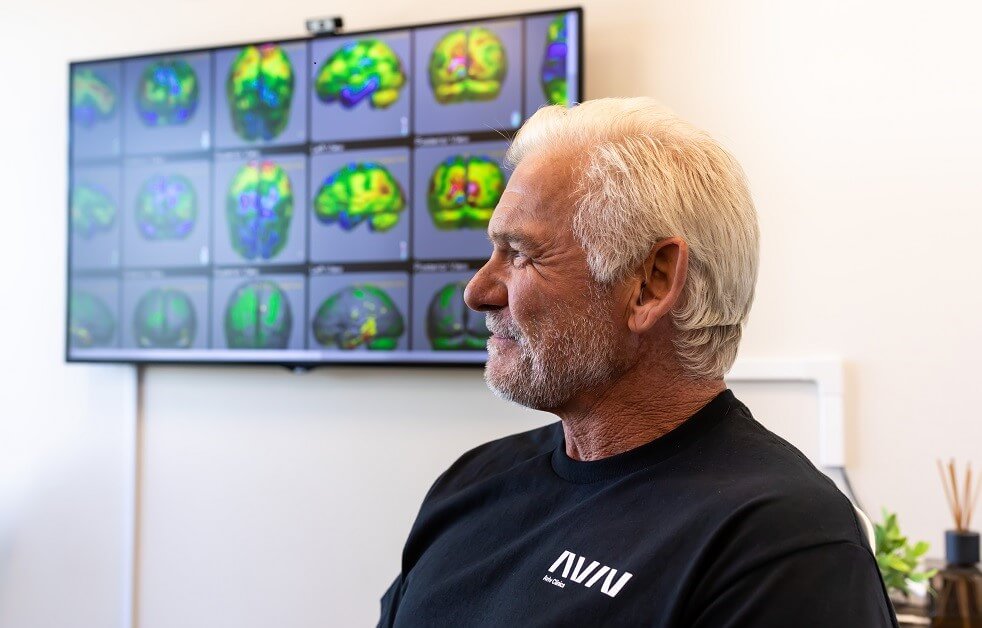
2 Key Signs of Ongoing Stroke Recovery
If you find your post-stroke recovery journey is slightly different, don’t stress about it. Everyone is different; thus, timelines and progress will vary. Regardless, there are two signs of recovery you can expect:
- There is improvement within three months and beyond: Although everyone recovers at a different pace, the first three months are generally when patients see and feel the most improvement. That’s why it’s more effective to begin a stroke recovery program quickly.
- Independence is improving: After a stroke, you may depend on others to help you carry out daily tasks such as getting dressed, bathing, or eating. With the right post-stroke treatment plan, you’ll start to rely less on others and perform those tasks independently again.
Stay educated on stroke by watching our on-demand webinar.
Recovering After a Stroke: Is it ever too late?
The Next Step in Your Stroke Recovery Timeline
Our team proudly assists a variety of clients, crafting an individualized plan for each patient.
Each stroke survivor’s path is unique. Meaningful recovery is still possible, even months or years after a stroke. At Aviv Clinics, our specialized post-stroke recovery program is designed to help you regain independence, improve cognitive and physical function, and enhance your quality of life.
Our team of experts will create a personalized plan that may include hyperbaric oxygen therapy, cognitive exercises, physical training, and nutritional guidance in a program tailored specifically to your needs.
Don’t wait to see what progress you can make on your own. Contact Aviv Clinics today to schedule a consultation and take the next step in your stroke recovery timeline.
Last Update: August 14, 2025
